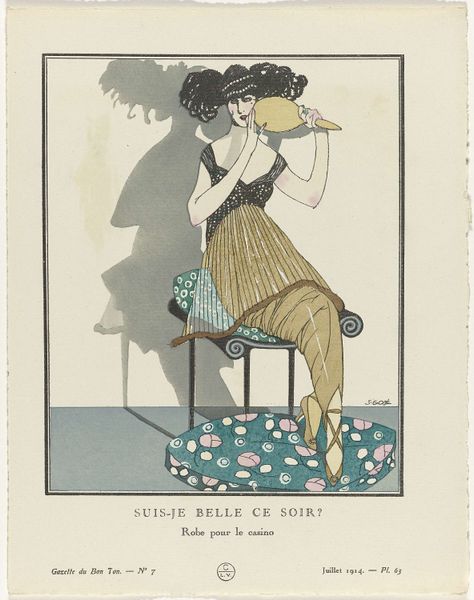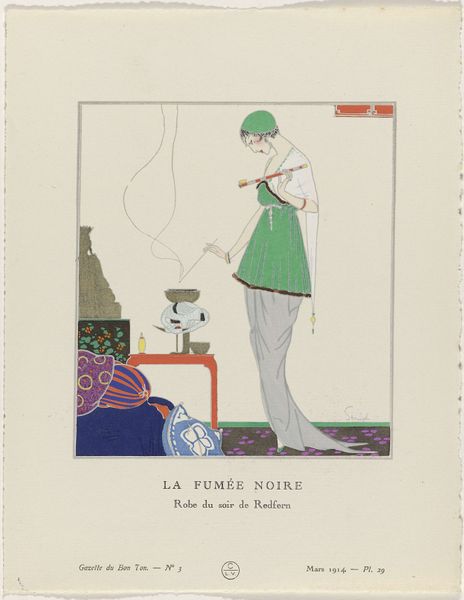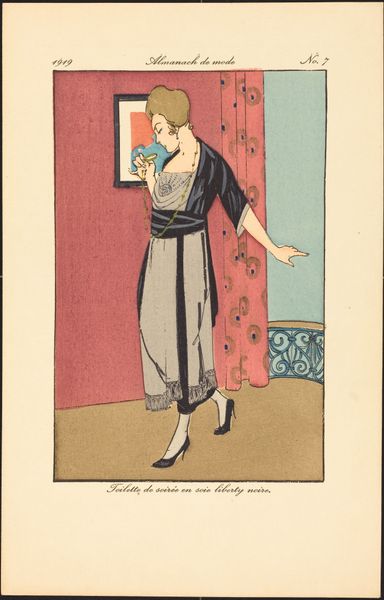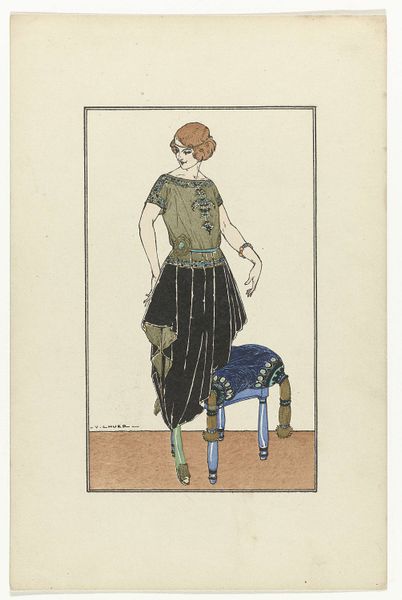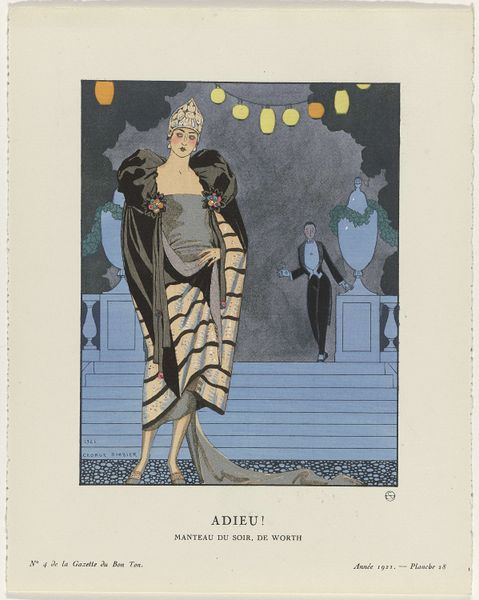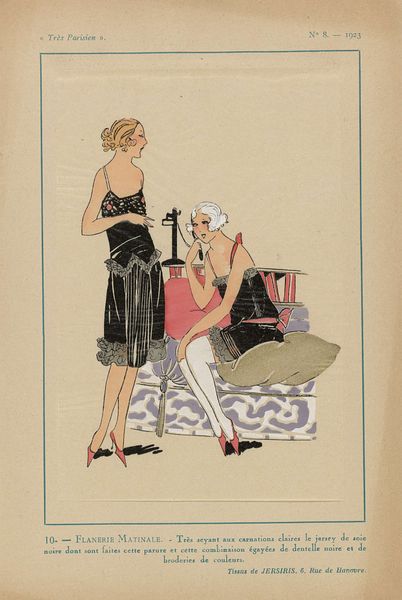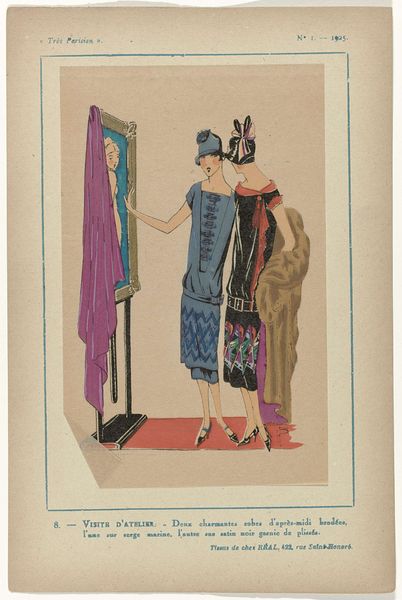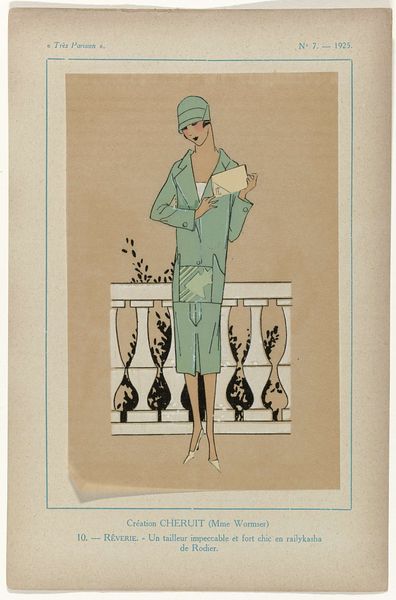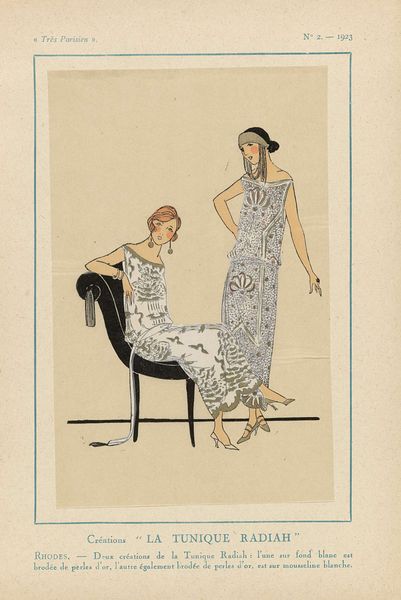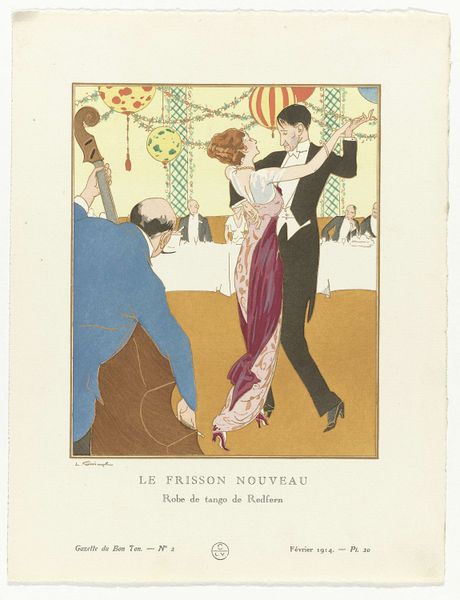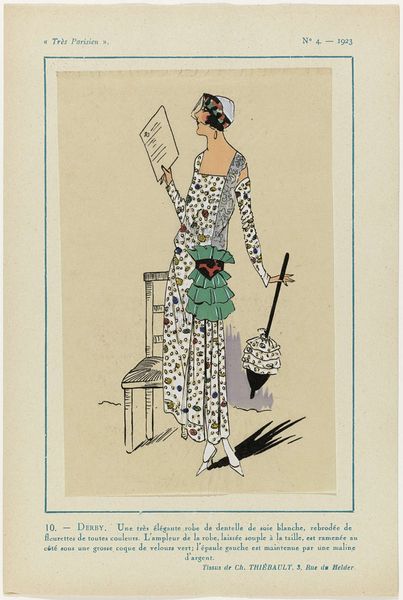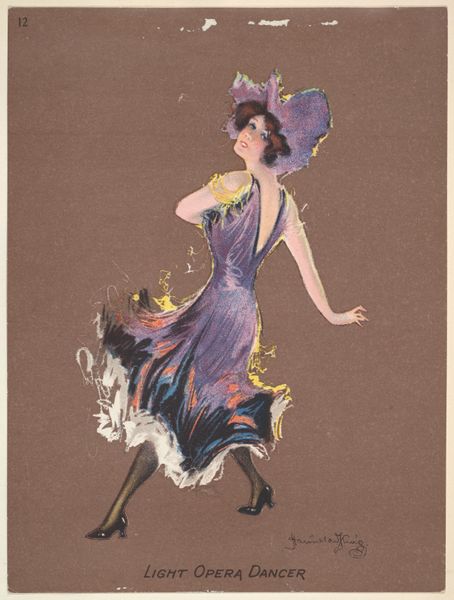
#
quirky illustration
#
art-nouveau
#
childish illustration
#
cartoon like
#
cartoon based
#
dog
#
cartoon sketch
#
figuration
#
flat colour
#
line
#
celebration photography
#
cartoon style
#
decorative-art
#
cartoon carciture
#
cartoon theme
#
dress
Dimensions: height 244 mm, width 191 mm
Copyright: Rijks Museum: Open Domain
Editor: Here we have Francisco Javier Gosé's 1914 illustration, "Gazette du Bon Ton. Art – Modes & Frivolités: Artists". It features a woman in an Art Nouveau dress alongside a dog. It’s interesting to see this published as a fashion plate just before the war started. What draws your eye when you look at this, specifically thinking about its role as a reproducible image? Curator: I notice the deliberate use of inexpensive printing processes and the simplification of form and color, aligning it more with commercial art and printed media rather than the traditionally valued unique artwork. It begs the question: what materials were employed in the printing? Were these high-end inks or were they cheaper, more readily available and reproducible inks that point to broader access? The flat colour, line work, and stylized forms prioritize mass appeal, effectively blurring the lines between 'high art' and accessible fashion documentation for the growing middle classes of the era. How do you see its position in the rise of the department store, with an eye towards mass consumption? Editor: That makes sense, the way it prioritizes mass production techniques! The drawing has a flatness that seems connected to its function. The text beneath calls the drawing "robe du soir," or evening dress. Curator: Yes! This relates directly to how clothing was starting to become industrialised. Gosé has effectively used these printing techniques to advertise fashion. So instead of focusing purely on artistry or aesthetics, we have to consider it as a part of a complex manufacturing and economic network. Does the type of clothing, the time, the illustration methods, or the paper, suggest access to privilege or aspirational consumption? Editor: I never really thought of fashion plates this way before, focusing on the physical aspects and economics. Thanks, that was a really enlightening way to see this image! Curator: Indeed. Considering the modes of production changes how we understand an image. Thank you!
Comments
rijksmuseum about 2 years ago
⋮
What set this fashion magazine ‘of good taste, art and frivolity’ apart was its unique collaboration with the artists who produced its illustrations. As well as drawing the haute couture of the fashion houses, they were also granted space in each issue to present designs of their own making. In each issue, three out of ten plates were reserved for such independent creations.
Join the conversation
Join millions of artists and users on Artera today and experience the ultimate creative platform.
